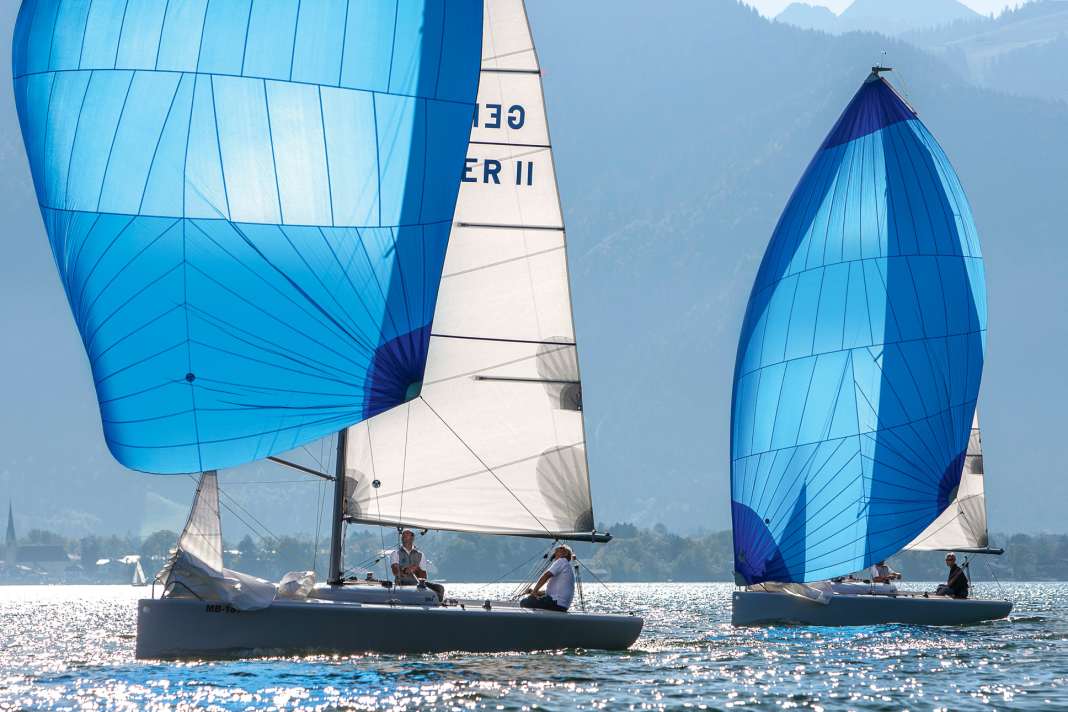





Sailing with gennaker
Gennakers are not only a source of fun, but also a logical addition to the sail plan for modern rigs. And really anyone can handle them
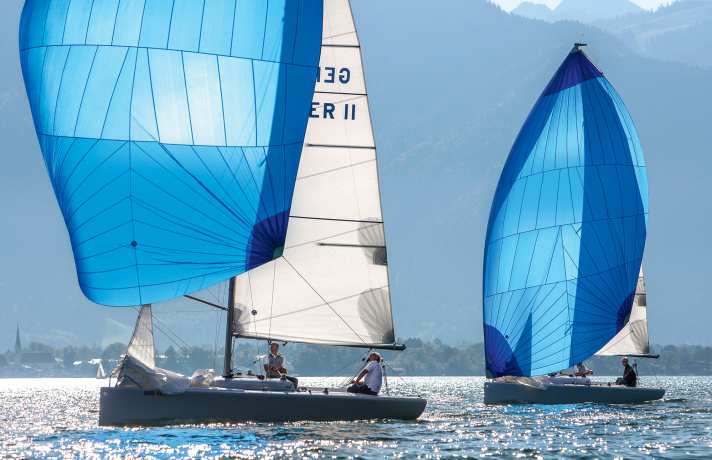
Only a few charter crews order a gennaker. How many owners have such a colourful cloth is not recorded. In percentage terms, however, it is unlikely to be that many more, based on how many of the large bubbles can be seen in summer on room-sheet courses. But why do so few dare to use this sail? There are no solid reasons against it, only prejudices - but there are plenty of facts as to why a gennaker is a must today.
First and foremost, there is the fun, the good feeling. A colourful bubble in front of the mast raises the reputation of the operating crew by several points. A little awe at the solid craftsmanship on the winches and clamps, a little envy at the significantly higher speed are automatically generated in those who are overtaken on the one-way street into the harbour at three in the afternoon. Which brings us to the first prejudice. Because sailing a gennaker does not require much more skill than the usual seamanship on board.
Anyone who normally adjusts the genoa correctly using the winch or chooses the course to suit the angle of attack of the sails does exactly the same with the gennaker. This is because the mainsail is basically nothing more than a genoa. It is just cut slightly differently to generate speed on courses between 90 and 140 degrees angle of incidence of the true wind. It can also be sailed higher or lower, depending on the cut, but the one indicated is the main area of use.
A gennaker is a must, especially for modern rigs with their narrow, high headsails. This is because even a slight shake in the sheets causes them to turn upwards and lose a lot of effect. A gennaker can remedy this shortcoming. The bubble is operated like a genoa. An aft deflection block, the cleat if necessary, a sheet and a short halyard line - that's all the additional equipment you need. The genoa is furled or recovered and the gennaker sheet is run on the now free winch. Furl or luff until the luff falls in slightly, then drop or crank tight. In gusts, generally drop a little. That's all the necessary trimming tips.
If the gennaker is fitted with a recovery tube, another prejudice is eliminated. Setting and recovering is no problem with it, the cloth does not have to be gathered together and cannot fall into the water - simply pull the sausage into the mast, raise the tube, sheet tight. Conversely, first drop down to a wind angle of around 160 degrees so that the bladder collapses in the lee of the main, pull the tube over with the recovery line and drop the sausage into the foredeck hatch or sail bag. That's it. The recovery tube also reduces the risk of tears because the gennaker no longer comes into contact with sharp or pointed objects.
So, more than enough reasons to give it a try. When chartering a gennaker, it usually costs between 100 and 250 euros extra; however, some providers do not charge anything for it. It is best to take out deposit insurance, as an extra deposit is often required. An owner can get the complete system for a ten-metre yacht for as little as 2,000 euros, but this price can easily be doubled with high-quality fittings and good cloth.
Another tip for beginners: a leeward sheet is enough. Just find a long piece and go! Jibing is also easy, but you'll have to wait until later.
Take a night trip
Most crews who fear night sailing have never done it. But if planned correctly, it is usually one of the most fascinating experiences of sailing
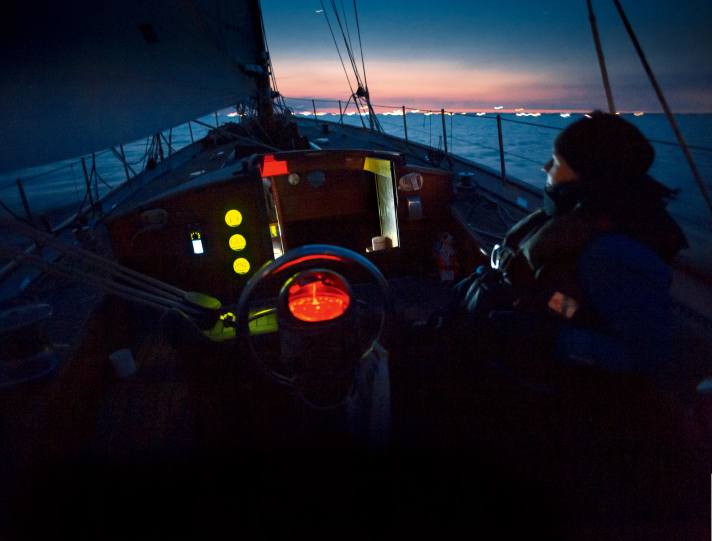
There is no need for elegiac rhapsodising to make a night sail plausible, as it offers so many objective advantages: an unattractive section of the journey can be completed in this way or a good stretch can be made at the beginning or end of a trip to increase the radius of action. In some areas with a lot of wind from one direction, such as the Greek Aegean, you can avoid the Meltemi, which often blows strongly during the day. A pending upwind battle against the significantly higher swell during the day is thus defused, for which fellow sailors prone to seasickness are grateful.
But of course there are also a whole series of "soft" arguments that make a night cruise worthwhile: the glow of the bow wave and stern sea, the often impressive starry sky away from the light sources on land, not to mention the first sunrise experienced at sea. And on no other occasion do you understand the meaning and purpose of beam angles in terms of light guidance as intuitively as on a night cruise.
If you plan your first trip in summer, with a bit of luck you can even spend the night in shorts and a T-shirt. The skipper doesn't need to worry too much about waking plans if there are three or more fellow sailors on board. Most of the time, everyone is so exhilarated at the first stroke of the night that hardly anyone voluntarily goes to bed before one o'clock. Experience shows that the time from two to about four or five o'clock in the morning is tough, but shortly after midnight it usually becomes clear quite quickly on board who takes over from whom and when. Rule of thumb: the more people on board, the shorter the intervals at the helm. However, it is often so warm on a balmy summer night that the crew simply doze in the cockpit. The obligatory coffee making or snack preparation also keeps fellow sailors fit; perfectionists, however, prepare them in advance.
To prevent the night trip from becoming stressful, you should avoid busy commercial shipping routes such as traffic separation schemes. Of course, you can also opt for a "night cruise light": Sail off late after a relaxed day in the harbour or bay or - usually even better - sail into the night and then arrive in a suitable bay or harbour in the dark. If the premiere ends at one or two o'clock after midnight, everyone is usually still so alert that the crew can savour the experience comfortably in the cockpit and be relatively fit the next day. Waking up in the morning in a beautiful bay in the dark is one of the best experiences of sailing.
Single-handed sailing
Travelling alone on a yacht - many people only dream about it. But moving a boat without a crew is not that difficult if you are well prepared

Of all the projects a sailor can undertake, single-handed sailing is probably the one with the most facets. Because if you are sailing alone, you have to take care of all aspects yourself, from mooring and casting off to sailing manoeuvres and navigation. No co-sailors, no division of labour, no excuses is the motto.
A common misconception about single-handed sailing is that it requires major technical modifications to the boat. But all you really need is a decent autopilot on board. Without it, work processes such as setting sails, making the boat ready for harbour manoeuvres and the like are already pretty borderline. Some skippers even manage this with lockable tiller or rudder systems, provided the boat is well stabilised.
Furling foresails also make sense, and are standard on the majority of yachts anyway. All other things on board can remain as they are, at least to start with. Of course, for perfectionists there is a long list of possible, very practical additions, such as lazy jacks so that the main does not have to be stowed immediately, halyards redirected into the cockpit, genoa winches that are easily accessible from the helm or cockpit displays for plotters - but the purse strings tend to set the limit here.
More importantly, find a feasible destination. Of course, an experienced owner can take his yacht on a single-handed holiday or even a long cruise, but why not start with the obvious step first? Weekend training in the summer: in calm weather, start by anchoring in bays so that you don't have to do all the manoeuvres straight away. Or a transfer to the berth at the end or start of the season.
Or, to start with, a frequently instructive exercise: single-handed sailing with a crew. It may sound silly, but anyone who tries outhauls, sailing manoeuvres and the like with an inactive crew on board risks little and learns a lot from experience. Problems that were not previously expected quickly become apparent without having to pay the "price" in the form of damage - perhaps apart from the comments of some spectators about the "lazy" crew members.
Those interested in one-handed manoeuvres must be aware of one thing: All manoeuvres take considerably longer. And planning the details is much more important than when sailing with a crew. If an important line is missing just before the mooring or is not properly attached, time and possibly also space in the harbour can become scarce. Therefore: go through the steps of the planned manoeuvre in detail, think about where lines, fenders, towing ropes and everything else that is needed must be located. Of course, it should also be clear that the autopilot on board is working properly and will keep the boat on course, for example in waves and wind. The same applies to keeping the yacht upwind to hoist and set the sails. So if the electronic helmsman is not already routine, you should first carry out tests!
Naturally, more attention must be paid to safety on board, as autopilots do not perform MOB manoeuvres for skippers who have fallen overboard. Everyone should have found their own answers to the questions of when to wear a lifejacket, how to peck in when leaving the cockpit and where to tighten stretch belts before the first solo outing.
Interestingly, budding single-handed skippers are not necessarily most worried about sailing the boat at sea, but about manoeuvring in the harbour. No wonder, as this is where you risk the greatest embarrassment in front of the critical dock sailors. And who wants to be responsible for annoying damage to their own or even someone else's boat as a result of botched manoeuvres?
Here are a few tips. If there is not enough time to make the boat ready before mooring or if the situation in the harbour is confusing, it may be worthwhile to first moor the yacht to leeward of a dolphin with just a single line and prepare everything in peace. Useful for harbours or bays where anchoring takes place: The stern anchor, with webbing over a pulley or with a chain leader and rope, can be ideally operated from the helm or moved to the bow later. Generally allow plenty of time to find a good spot.
When entering pits, the fenders should not be hung outboard too early, as they tend to get caught on dolphins or neighbouring boats and bend railing supports. Forelines should be laid loosely over the pulpit so that helping hands ashore can grab them directly. In many situations, stern-first moorings are the better solution: the skipper has the stern lines directly within reach, can estimate the distance to the pier better than when "parking" forwards and, if necessary, the yacht can also "steam" into the stern lines for stabilisation until a bow line is deployed.
Once the stress of single-handed sailing has been reduced in this way, there are hardly any reasons not to give it a try. Researchers and experienced solo sailors agree: being alone at sea with a boat very quickly leads to a deep relaxation that can hardly be experienced with a crew. Being alone in nature, focussing on yourself, releases happiness hormones similar to those of long-distance runners. There is even a psychological term for this: "flow effect". Sounds promising, doesn't it?
Sailing in the tidal area
Some of the most beautiful cruising destinations are located in tidal areas. Many skippers stylise this as an almost insurmountable hurdle. But you can vary the level of difficulty
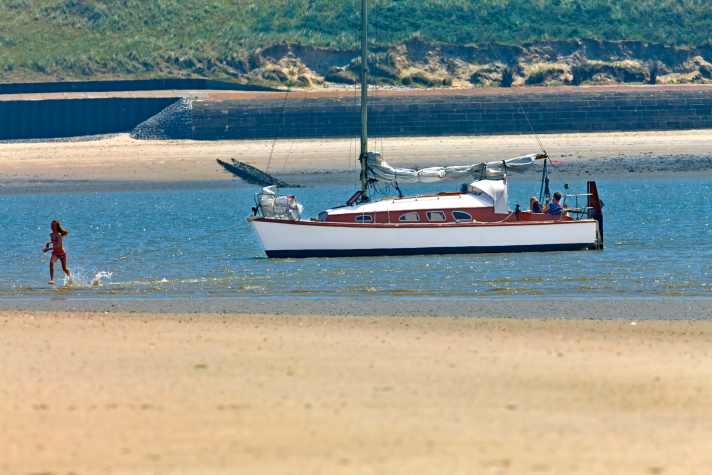
Two facts to think about first: tidal areas are more biologically rich than those with little influence from the phases of the moon. Many of these areas are home to seals and dolphins, and the low tide exposes huge fields of mussels. And secondly: many islands, bays, gulfs or fjords show two completely different and yet equally attractive faces in the half-day rhythm of the tide. Then water surfaces suddenly become structured rocky landscapes, sandbanks or huge kelp fields. It is undisputed that landscapes such as the Wadden Sea with the German and Dutch islands, Brittany in France, the south coast of England or exotic destinations such as the coast of Canada are visual highlights.
This makes it all the more surprising that so few German crews dare to sail in areas that British, Dutch and French sailors take for granted. Certainly, tidal areas are more demanding than the Baltic Sea or large parts of the Mediterranean; however, many crews underestimate that the degree of difficulty can be varied. And this applies to all three of the feared complications of sailing in the current: the worry of having too little water under the keel and the yacht falling dry unplanned, having to spend half the day struggling with the complicated use of tide tables, current charts and current triangles or having to sail according to the tidal calendar and thus supposedly having to leave at night.
Of course, the skipper cannot avoid the basics of tidal navigation (see boxes), but nowadays there is almost always no need to draw current triangles, for example, as in sailing training. Anyone travelling with plotters can easily keep an eye on current and drift with the help of electronics. The use of the other manuals and tables usually becomes so natural after a short time that it hardly takes half an hour a day. It can happen that a daily goal makes it necessary to check the clock. But if you don't plan too long legs, you will be able to limit this to once or twice during a trip. If the crew internalises the principle of working with the current rather than against it, you soon discover that tidal navigation can be relatively simple: If the route to the destination leads across a secondary fairway or even a dry shallow, there is often an alternative route that requires a longer route, for example the route "around" some North Sea islands instead of in their swell cover.
When it comes to harbours and anchorages, almost every area offers a choice: although there are places that fall dry, there are always plenty of tide-independent marinas or anchorages on floating pontoons or buoys in deep water. Then you just have to decide: enjoy the natural spectacle of the changing tides in the cockpit or in the harbour pub?
A blow in strong winds
Lots of wind = harbour day - that's how it often looks in reality. However, reservations are often only due to experiences from poorly planned trips
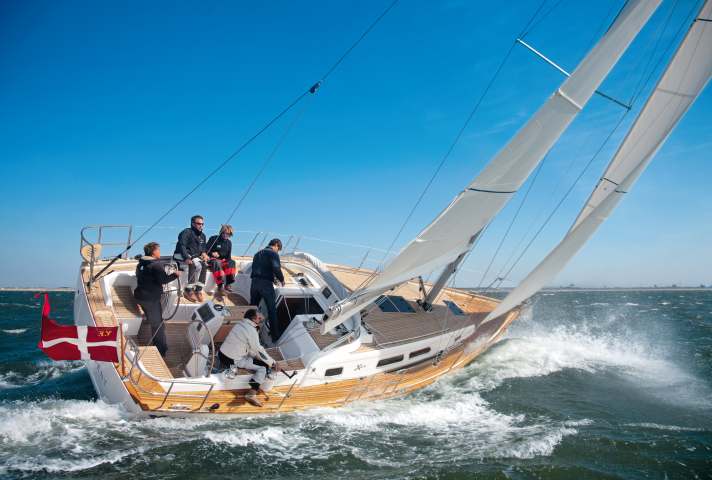
The exaggeration of true and experienced wind force is probably as old as seafaring itself: back in the harbour, the wind was always at least 1 to 2 Beaufort stronger than it actually was. There is probably no other way to explain why you see fewer and fewer ships leaving the harbour when the forecast is 4 to 5 Beaufort. As a reminder: there is no strong wind at 5 Beaufort, it only starts at 6 Beaufort.
So why should you leave at all? There are actually more good reasons than many people think. Firstly, of course, the time factor: charter crews sometimes have to bring their ship back and practically have no choice but to leave. But it can also be annoying for owners, especially on the Baltic Sea, to be "stuck" in a harbour for days on end, especially if it doesn't offer much in the way of leisure activities, as is often the case in Denmark. Sometimes the whole hard-earned cruise plan for the holiday can get mixed up, or the crew can quickly get on each other's nerves.
But don't worry, of course nobody wants you to sail into the next best storm (which only starts at 8 Beaufort). But why not dare to take a short, manageable trip? Literally just stick your nose into the wind once, so to speak. After all, if you plan a short trip of two, maximum three hours, you run little risk of overtaxing the crew. Important: The crew must be willing to take part in the trip. Discuss this with your fellow sailors. Many reservations about sailing in around 5 to 6 Beaufort - and more is not recommended for crews who have previously only travelled in fair weather - are based on unwanted strong wind days: a weather forecast was overlooked, a jet or cloud front was underestimated. The unprepared crew then often experience the heavy weather as a drama, even if objectively speaking it may not have been that bad. Such experiences leave their mark. But they can also be a hindrance, so try to find out in advance. This way, a good skipper knows which crew member to look after the most.
Preparation is very important. The safety rules (compulsory waistcoats, ropes) must be clarified, other standards must be taken care of: everything must be well stowed below deck, sea valves closed, snacks prepared, everyone should already have the appropriate clothing on their bodies. As much work as possible should also be done in the harbour in terms of sailing tactics and on deck. Otherwise it will be unnecessarily difficult later at sea.
A fear factor that should not be underestimated for many crews is the docking and casting off in the prevailing wind conditions, which often clearly outweighs the unease about the weather "outside". As a rule, you can no longer influence the casting off, but for the destination or the bay it is worth looking for a harbour with good wind protection, enough space and, if possible, rows of boxes that are not necessarily at right angles to the wind direction. Then hardly anything can go wrong - except perhaps the perceived wind force.
Other things that you should try out as a sailor
Foiling
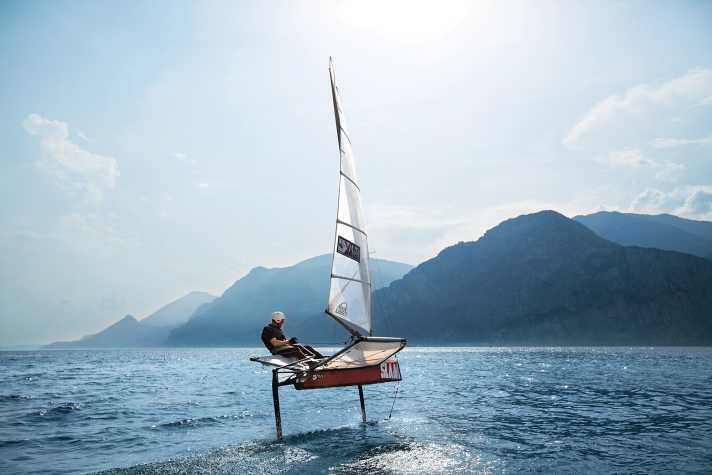
Admittedly, the dream of flying under sail is not for everyone, and a minimum level of athleticism, dinghy experience and a desire to test your own limits are all part of it. But the days when foiling was only possible for those who sailed at 49er level are over. Boats such as the Skeeta, the iFly (cat), the Quant 23 or Whisper are so sophisticated in their flying characteristics that they can also be mastered by amateurs. "The Highfly flashes everyone," says YACHT editor Lars Bolle, for example. Foil camps such as Stickl's on Lake Garda are ideal.
Dinghy cruise
Let's be honest: almost everyone has a sleeping bag, sleeping mat, tent and camping cooker lying around somewhere. Get an old dinghy from a hire company or sailing mate and the adventure can begin right on your doorstep! Anyone who has only sailed keelboats in recent years will be surprised at how much fun these small dinghies are and how they can take you to any secluded bay. There you can go fishing, light a campfire and try out the simple life. Yes, your back will ache in the morning, but the experiences and impressions are incomparable. And with a smartphone and navigation app installed, modern civilisation is never really far away. When you return home, you are guaranteed to see the comforts of home with completely different eyes.
Beach cat sailing
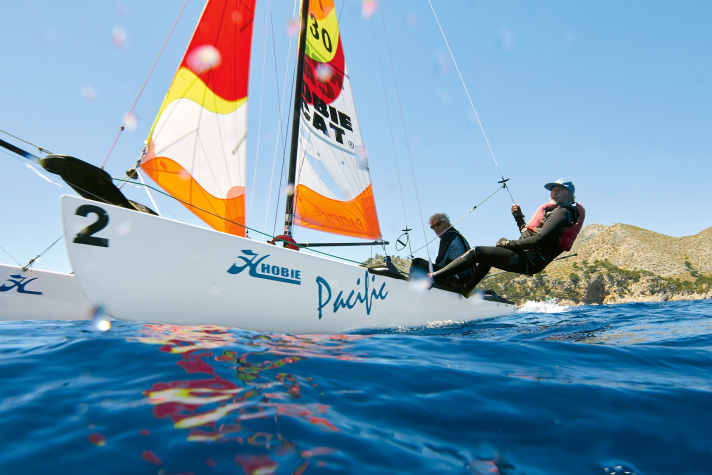
There are few things that are as much fun and get the adrenalin pumping as a modern beach cat when the wind picks up speed. Strong winds are no longer necessary - thanks to easy-to-use gennaker furling systems, where the turbo is simply set, recovered or furled by pulling. Due to their width, cats are also calmer in the water than dinghies and are therefore easier to control at the beginning. The tickling moment when you manage to sail the boat with a hull in the air for the first time is indescribable. It's best to find a good sailing school nearby and take off.
Midsummer night's tale in Scandinavia

The effect is difficult to describe: Anyone who sails northwards in the higher latitudes in Scandinavian June, for example from Stockholm, experiences the short nights of just a few hours with great amazement. Suddenly the body can manage on five hours' sleep, you look at your watch while sailing and realise with a frown that it is 10 pm but it feels like 5 pm. The light just won't go away, your body feels a bit like it's on drugs. The longest day is 21 June, but even a few weeks before and after that the effect is still amazing. On top of that, the Swedes celebrate Midsummer with big fires and outdoor parties with friends and acquaintances. Every cruising sailor should experience this at least once.
Long distance sailing
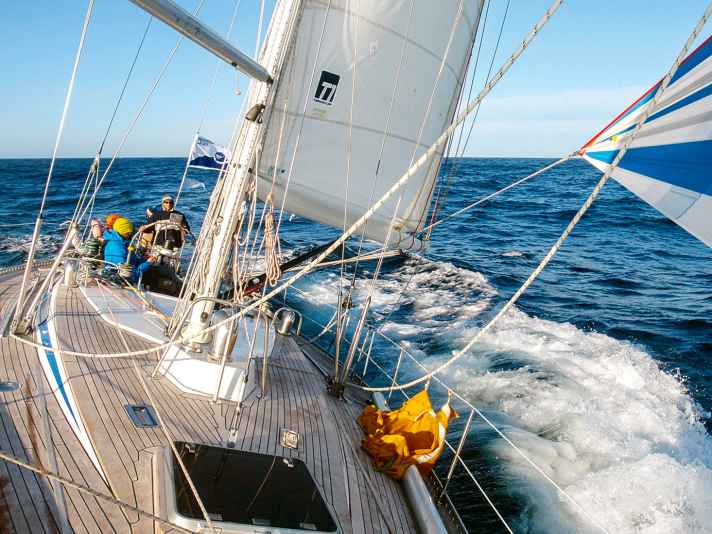
If you only ever plan your holiday from your home port or charter base with the usual 20 to 30-mile trips, you'll be blocking your horizons. Why not take the boat to more distant destinations in a non-stop leg lasting two or more days, so that a previously uncharted area comes into focus? Stockholm, the south coast of Norway - no problem if you "eat up the miles" when the wind is favourable. Such an experience helps the crew to mature enormously as sailors. Sailing alone with a watch system is a completely new challenge for many. Have the courage!

